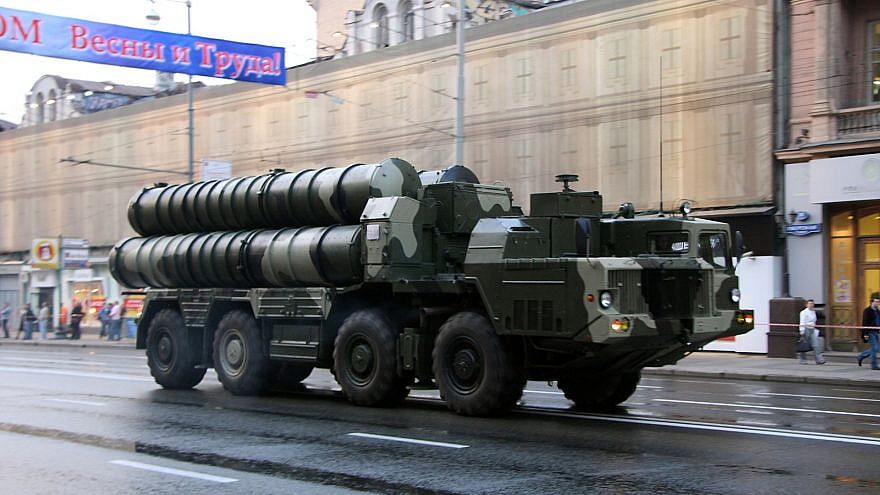The announcement by Russia on Monday to transfer its advanced S-300 air-defense system to the Syrian government within two weeks is a disturbing yet surmountable challenge to Israel.
In a move that can only be interpreted as an intended punishment against Israel, Russia’s Defense Minister Sergei Shoigu said Moscow would transfer the system, as well as electronic warfare systems, to Syria’s air-defense units, arming them with advanced weapons to use against the Israeli Air Force (IAF).
A number of initial conclusions can be drawn from Russia’s announcement.
The first is that the IAF’s job in Syria—to prevent Iran from flooding the region with weapons and military units—is about to get even more complicated. But that does not mean that this is a “mission impossible.”
Syria’s airspace is already the most crowded in the world with air-defense systems. President Bashar Assad’s regime is currently armed with a range of Russian-made surface-to-air missile batteries (though it lost around half of them to Israeli strikes in recent months). Assad has been eyeing a purchase of the more advanced S-300 systems for years.
Arming Assad with the S-300 will increase the already formidable threat to Israeli jets that are out there, enforcing Israel’s red line against Iran’s military expansion. It could embolden the Syrian regime to fire even more aggressively at Israel’s air force.
No stranger to the system
The good news, however, is that Israel is no stranger to the S-300 system. It already exists in Syria since Moscow deployed it—and its more advanced version, the S-400—to protect Russia’s own bases and port.
Despite the advanced radars of these systems, it appears as if the IAF has learned how to operate without being detected. In addition, the growing Israeli squadron of stealth F-35 fighter jets, which are designed for just these kinds of missions, should be able to penetrate heavily guarded airspace and lead future missions against Iran’s activities.
Israel’s use of long-range standoff weapons, which allow jets to strike targets without needing to necessarily enter Syria’s airspace, is also an important ability.
What all of this means is that the IAF has likely been developing solutions to the S-300.
Although the threat is growing to Israel’s freedom of operation around Syria, the IAF is capable of working around it. The fact that Iran has already taken hold of the S-300, and used it to defend its nuclear sites, also likely served as a good reason for Israel to figure out ways of overcoming the system.
However, what is less encouraging is the fact that the S-300 system in Syrian hands can be used as an offensive weapon to threaten Israel’s civilian air traffic.
Because of its long range, the Syrians can use the S-300 to watch, and theoretically target, any commercial flight coming in to land or taking off at Ben-Gurion International Airport. This enhancement to Syria’s ability to threaten Israel is an explosive development, and it is not one that Israel will necessarily choose to live with in the future.
The close relationship that exists between the Assad regime, Iran and Hezbollah also means that Russia has in effect rewarded the Iranian-led radical axis, and moved closer to it by choosing to punish Israel and by ignoring Iran’s dangerous actions that led to the downing of the Russian plane.
In its effort to defend the Assad regime, Russia is trying to deter Israel and get Jerusalem to scale back its military campaign against Iran’s activities in Syria.
Yet Israel’s active-defense campaign is a critical preventative policy. It is the only thing standing in the way of Iran’s plan to encircle Israel with precise missile arsenals, pointed at Israel’s population centers and strategic sites.
Israel cannot afford to allow Iran to move ahead with these plans. While it must manage the risks judiciously, it does not have the luxury of choosing to let the Iranians take over Syria.
The Russian shift away from Israel is a disturbing trend that the Jewish state will need to deal with by employing a combination of assertiveness and modesty. This is the formula that a regional power like Israel must use when dealing with a global military power like Russia.
The United States, on the other hand, as the world’s leading military superpower, can take a far stronger position in support of its Israeli ally, when dealing with Russia’s role in the Middle East.

























